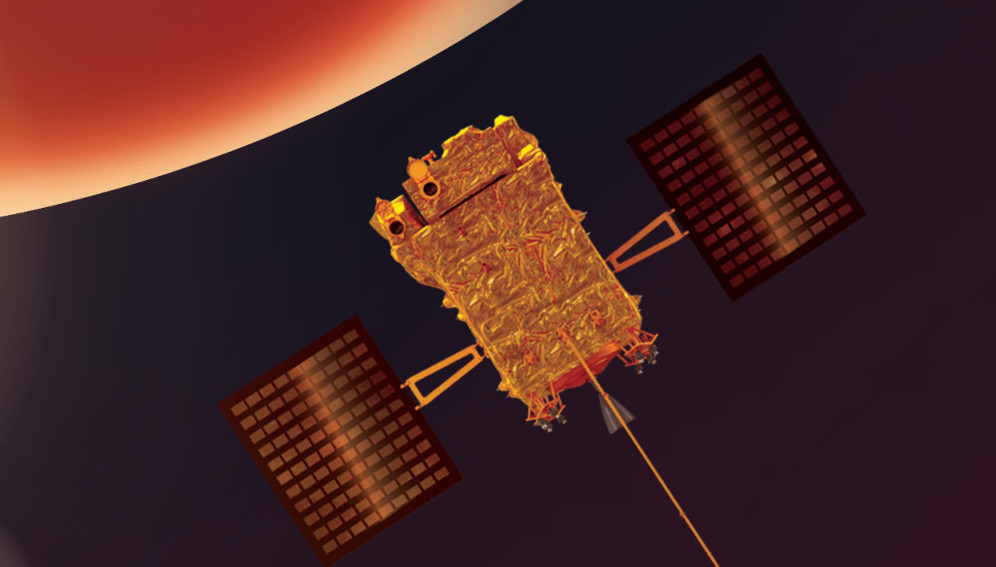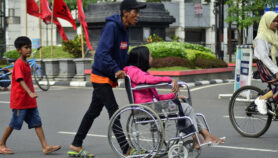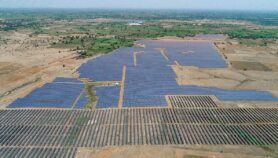05/09/23
India’s space missions spark science funding debate

By: Athar Parvaiz
Send to a friend
The details you provide on this page will not be used to send unsolicited email, and will not be sold to a 3rd party. See privacy policy.
[NEW DELHI] Scientists in India have applauded the launch of a probe to study the sun following the country’s historic lunar landing, but question the implications for broader science funding.
Days after its successful landing on the unexplored south pole of the moon, India’s space agency set off another probe on Saturday (2 September), this time to study the sun.
Named Aditya-L1, after the Hindi name for the sun, it will have the advantage of continuously viewing the sun without any eclipses. The probe will also be able to observe solar activities and their effect on space weather in real time, the Indian Space Research Organisation (ISRO) stated on its website.
The back-to-back space probes have cast India as a leading player in space exploration, with the ISRO hailed globally for its relatively low budget lunar landing, as compared to missions by US, China and Russia.
India is reported to have budgeted US$46 million for the sun probe mission while its Chandrayaan-3 lunar mission was done on a relatively low starting budget of US$75 million.
But the elation in India evoked by the successful space exploration missions has some scientists wondering whether if it will come at a cost for less headline-grabbing science.
Over the years, the scientific community in India has often expressed concerns about the lack of desired budgetary provisions for science.
“Science projects in India are heavily compartmentalised. So, ISRO’s funding is different from funding [for other science projects],” D Indumathi, a professor of theoretical physics at the Institute of Mathematical Sciences, Chennai, told SciDev.Net.
“While I would certainly hope that there will be more funding, especially for large science projects in the country, I am not sure that this will happen.”
Some scientists say that while the successful moon landing sparked a sense of pride in India’s scientific, engineering and technological abilities, it also highlighted a lack of support for foundational sciences.
Aurnab Ghose, professor of neurobiology at the Indian Institute of Science Education and Research (IISER), Pune, said the landing on the lunar south pole was “a remarkable achievement for India and also for humanity,” and was “justifiably being celebrated” by scientists and the wider population.
But he told SciDev.Net: “It comes at a time when government support for fundamental sciences is contracting and the commodification of higher education is on the rise.
“If the success of Chandrayaan-3 does result in increased government funding for science, I suspect it will be for large, mission-mode projects with largely technological and public attention-grabbing outcomes, not just limited to space sciences.”
Argha Banerjee, a climate science professor at IISER, said: “Funding ‘popular’ projects at the expense of balanced growth in all areas of science, if it happens, will surely be detrimental as steady efforts (and funding) to build a strong community of scientists is more important.”
However, Sutirth Dey, a professor of biology at IISER, expressed his hope that since “ISRO is extremely cost-efficient, even if there is a greater focus on space science, that will not come at a cost to other areas.”
Development question
There are also questions about whether India should be spending huge amounts of money on space exploration considering its human development indicators, or should instead focus on poverty eradication, education and health.
According to the UN Development Programme’s Human Development Index (HDI) 2021-22, India ranked 132 out of 191 countries and territories. The report, however, noted that India’s HDI value “has been steadily catching up to the world average since 1990 – indicating a faster than the global rate of progress in human development.”
“Nobody can deny that the country needs to address the economic development issues,” said Rohini Godbole, professor at the Centre for High Energy Physics, Indian Institute of Science.
“But I would like to say that we have come a long way from the 1960’s where these questions could have been asked legitimately.
“In fact, it is to the credit of India’s space programme that its first applications were all for societal purposes.
“I don’t see any contradiction in a country pursuing a space programme and also develop plans to sort out its societal problems. The two are not mutually exclusive.”
Ghose said that the promotion of science and technology across the board has many knock-on effects.
“These go beyond immediate technological gains – indigenous space technology directly improving weather forecasting and communication,” he explained.
“There are also fundamental scientific gains – say detecting water on the moon or signs of biological life on Mars. The latter kind, though not of immediate use to alleviate the myriad issues of a developing country, may have a significant impact in the future.”
Space research, according to Dey, is important and has tangible practical benefits in areas such as defence, surveying and climate prediction.
“Also, it is one of the few things that can actually bind the entire country, and make all of us proud,” he added.
“Particularly given the extremely high cost-efficiency of our space programme, I think that it is more than justified.”
This piece was produced by SciDev.Net’s Asia & Pacific desk.















